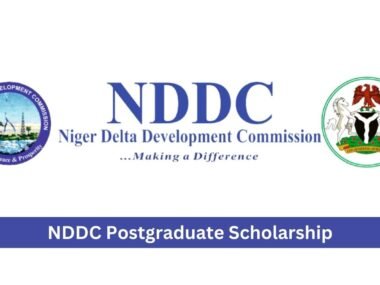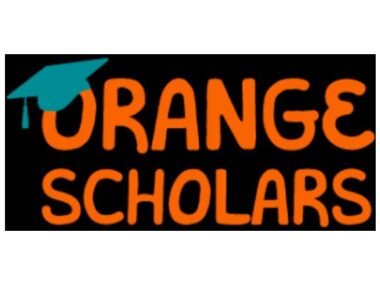A Reference Letter for Student Scholarship is a critical component of many scholarship applications, serving as a powerful endorsement of a student’s academic achievements, character, and potential. Whether you’re a teacher, professor, employer, or mentor, writing a compelling reference letter can significantly influence a student’s chances of securing financial aid for their education.
This article provides a detailed guide on how to craft an effective Reference Letter for Student Scholarship, including structure, content, tips, and best practices. Drawing on insights from educational resources and recent trends (2020–2025).
Understanding the Purpose of a Reference Letter for Student Scholarship
A Reference Letter for Student Scholarship is a formal document written by someone who knows the student well and can attest to their qualifications for a specific scholarship. Unlike general recommendation letters, these letters are tailored to highlight attributes that align with the scholarship’s criteria, such as academic excellence, leadership, community involvement, or financial need. Scholarship committees rely on these letters to gain a third-party perspective on the applicant’s abilities and character, making them a pivotal part of the selection process.
The importance of a well-crafted Reference Letter for Student Scholarship cannot be overstated. According to scholarship application guidelines from institutions like Embry-Riddle Aeronautical University and the University of Southern California, reference letters provide context beyond grades and test scores, offering insights into a student’s work ethic, resilience, and potential contributions to their field or community. With scholarships becoming increasingly competitive—some receiving thousands of applications annually—a strong reference letter can set a candidate apart.
Key Components of a Reference Letter for Student Scholarship
To write an effective Reference Letter for Student Scholarship, you must include specific elements that provide a clear, compelling case for the student. Below is a breakdown of the essential components, based on best practices from educational institutions and scholarship organizations.
1. Professional Letterhead and Contact Information
Begin the Reference Letter for Student Scholarship with your professional letterhead, including your name, title, institution or organization, address, phone number, and email. This establishes your credibility and allows the scholarship committee to contact you if needed. For example:
Dr. Jane Smith
Professor of Biology
XYZ University
123 Main Street, City, State, ZIP
Phone: (123) 456-7890
Email: jane.smith@xyzuniversity.edu
If you’re writing as an individual without institutional affiliation, include your name and a brief description of your relationship to the student (e.g., “High School Counselor”).
2. Date and Recipient Details
Include the date and, if known, the recipient’s details, such as the scholarship committee’s name or the specific scholarship program. If the recipient is unknown, a general salutation like “Dear Scholarship Committee” is appropriate. For example:
October 15, 2025
Scholarship Selection Committee
Bright Futures Scholarship Program
[Address, if known]
3. Introduction
The introduction should clearly state the purpose of the Reference Letter for Student Scholarship and your relationship to the student. Specify how long you’ve known the student and in what capacity (e.g., teacher, supervisor, mentor). A strong opening sets the tone and establishes your authority to recommend the student. For example:
I am pleased to write this Reference Letter for Student Scholarship in support of [Student’s Full Name] for the [Scholarship Name]. As [Student’s] [your position, e.g., calculus teacher] for the past two years, I have witnessed their exceptional academic performance and dedication to [relevant field or activity].
4. Body Paragraphs
The body of the Reference Letter for Student Scholarship should provide specific examples of the student’s qualifications, tailored to the scholarship’s criteria. Typically, two to three paragraphs are sufficient, each focusing on a different aspect of the student’s profile.
Academic Achievements
Highlight the student’s academic strengths, such as GPA, awards, or performance in relevant courses. Use specific examples to demonstrate their intellectual curiosity or mastery of a subject. For instance:
In my Advanced Placement Physics class, [Student’s Name] consistently ranked among the top 5% of students, earning an A+ and the Outstanding Student Award for their innovative project on renewable energy systems.
Leadership and Extracurricular Involvement
Many scholarships value leadership and community engagement. Describe the student’s roles in clubs, sports, volunteer work, or other activities, emphasizing their impact. For example:
As president of the Robotics Club, [Student’s Name] led a team to a national competition, securing first place through their strategic planning and collaborative leadership.
Character and Personal Qualities
Discuss the student’s character traits, such as resilience, integrity, or compassion, that make them a deserving candidate. Personal anecdotes strengthen this section:
When a peer struggled with coursework, [Student’s Name] voluntarily tutored them after school, demonstrating selflessness and a commitment to helping others succeed.
If the scholarship emphasizes financial need or specific criteria (e.g., STEM focus, underrepresented backgrounds), address these directly. For example, for a Reference Letter for Student Scholarship targeting underrepresented students, you might write:
As a first-generation college student, [Student’s Name] has overcome significant challenges, balancing a part-time job while maintaining a 3.8 GPA.
5. Connection to the Scholarship
Explicitly link the student’s qualifications to the scholarship’s goals. Research the scholarship’s mission (e.g., via its website or application guidelines) to ensure alignment. For instance:
The [Scholarship Name]’s focus on fostering innovation in aerospace engineering aligns perfectly with [Student’s Name]’s research on unmanned aerial vehicles, which earned them recognition at the National Science Fair.
6. Closing Statement
Conclude the Reference Letter for Student Scholarship with a strong endorsement, summarizing why the student is an ideal candidate. Offer to provide additional information and include your contact details again. For example:
I wholeheartedly recommend [Student’s Name] for the [Scholarship Name]. Their academic excellence, leadership, and passion make them an outstanding candidate. Please contact me at [email/phone] for further details.
Sincerely,
[Your Full Name and Title]
Best Practices for Writing a Reference Letter for Student Scholarship
Crafting a Reference Letter for Student Scholarship requires careful attention to detail and adherence to best practices. Below are key tips to ensure your letter is impactful and professional.
1. Tailor the Letter to the Scholarship
Generic letters are less effective. Review the scholarship’s criteria (e.g., academic merit, financial need, leadership) and tailor your content accordingly. For example, a Reference Letter for Student Scholarship for a STEM-focused award should emphasize the student’s technical skills and projects, while a community service scholarship letter should highlight volunteer work.
2. Use Specific Examples
Vague praise weakens a Reference Letter for Student Scholarship. Instead of saying, “They are hardworking,” provide evidence: “They completed a 20-page research paper on climate change, earning the highest grade in a class of 30 students.” Specific examples make your endorsement credible and memorable.
3. Maintain a Professional Tone
Use formal language and avoid overly casual or emotional phrasing. A Reference Letter for Student Scholarship should be polished and concise, typically one to two pages (500–800 words). Avoid jargon or clichés like “one in a million” unless supported by evidence.
4. Highlight Unique Qualities
Scholarship committees read hundreds of letters. Make your Reference Letter for Student Scholarship stand out by emphasizing what sets the student apart. For example, mention a unique project, an unusual challenge they overcame, or a distinctive contribution to their community.
5. Proofread Thoroughly
Errors in grammar, spelling, or formatting can undermine your credibility. Double-check names, dates, and scholarship details. If possible, have a colleague review the Reference Letter for Student Scholarship before submission.
6. Meet Deadlines
Scholarship deadlines are strict. Confirm the submission process (e.g., email, online portal, or mail) and ensure the letter is submitted on time. For example, Embry-Riddle’s scholarship portal requires letters by March 1 for some awards. Late submissions may disqualify the student.
Common Mistakes to Avoid
When writing a Reference Letter for Student Scholarship, steer clear of these pitfalls:
-
Being Too Generic: Avoid vague statements like “They are a good student.” Provide concrete examples to back up claims.
-
Ignoring Scholarship Criteria: Failing to address the scholarship’s specific requirements weakens the letter’s impact.
-
Overloading with Information: Focus on the most relevant achievements rather than listing every accomplishment.
-
Writing Without Knowing the Student Well: If you lack sufficient knowledge of the student, decline to write the letter or collaborate with them to gather details.
-
Using an Informal Tone: Avoid slang or overly personal anecdotes that may seem unprofessional.
Sample Reference Letter for Student Scholarship
Below is a sample Reference Letter for Student Scholarship to illustrate the structure and tone:
Dr. Jane Smith
Professor of Biology
XYZ University
123 Main Street, City, State, ZIP
jane.smith@xyzuniversity.edu
(123) 456-7890October 15, 2025
Scholarship Selection Committee
National STEM Scholars Program
[Address, if known]Dear Scholarship Committee,
I am honored to write this Reference Letter for Student Scholarship in support of Emily Johnson for the National STEM Scholars Program. As Emily’s biology professor and academic advisor for three years, I have witnessed her exceptional intellect, leadership, and commitment to scientific research.
Emily has consistently excelled in her coursework, maintaining a 3.9 GPA and earning the Outstanding Biology Student Award in 2024. Her senior thesis on genetic markers in plant resilience was published in a peer-reviewed journal, a rare achievement for an undergraduate. Beyond academics, Emily led the university’s Environmental Club, organizing a campus-wide recycling initiative that reduced waste by 20%. Her ability to balance rigorous coursework with impactful leadership demonstrates her readiness for the challenges of the STEM Scholars Program.
Emily’s passion for addressing climate change aligns with your program’s mission to foster innovative solutions in STEM. As a first-generation college student, she has overcome financial challenges while mentoring peers, showcasing her resilience and generosity. I am confident that Emily will contribute meaningfully to your program and the broader scientific community.
I wholeheartedly recommend Emily Johnson for the National STEM Scholars Program. Please contact me at jane.smith@xyzuniversity.edu or (123) 456-7890 for additional information.
Sincerely,
Dr. Jane Smith
Professor of Biology
This sample demonstrates how to incorporate specific examples, align with scholarship goals, and maintain a professional tone in a Reference Letter for Student Scholarship.
Tips for Students Requesting a Reference Letter for Student Scholarship
Students play a crucial role in ensuring the Reference Letter for Student Scholarship is effective. Here are tips for students seeking letters:
-
Choose the Right Recommender: Select someone who knows you well, such as a teacher, professor, or supervisor, and can speak to your qualifications for the specific scholarship.
-
Provide Supporting Materials: Share your resume, transcript, scholarship details, and a list of achievements to help the writer craft a tailored letter.
-
Request Early: Give your recommender at least 3–4 weeks to write the letter, especially during busy periods like scholarship season.
-
Follow Up Politely: Confirm submission deadlines and offer to provide additional information if needed.
-
Express Gratitude: Thank your recommender with a handwritten note or email, and update them on the scholarship outcome.
Recent Trends in Scholarship Reference Letters (2020–2025)
Recent trends in scholarship applications highlight the evolving role of the Reference Letter for Student Scholarship. According to data from scholarship platforms like Fastweb and university financial aid offices, there’s an increased emphasis on:
-
Diversity and Inclusion: Scholarships targeting underrepresented groups (e.g., first-generation students, minorities) require letters that address overcoming barriers or contributions to diversity.
-
Digital Submission: Most scholarships now require electronic submission via portals like ERNIE (Embry-Riddle) or Common App, necessitating clear formatting and PDF uploads.
-
Holistic Evaluation: Committees value letters that provide a well-rounded view of the student, balancing academic, leadership, and personal qualities.
-
Virtual Endorsements: With remote learning and hybrid environments, recommenders may need to base letters on virtual interactions, requiring creative ways to highlight student engagement (e.g., online projects or Zoom discussions).
Challenges in Writing a Reference Letter for Student Scholarship
Writing a Reference Letter for Student Scholarship can present challenges, including:
-
Limited Information: If you don’t know the student well, request a meeting or supporting documents to gather details.
-
Time Constraints: Faculty and professionals often write multiple letters during scholarship season. Prioritize requests and manage time effectively.
-
Balancing Praise and Honesty: Avoid exaggerating the student’s abilities, as this can undermine credibility. Focus on genuine strengths.
-
Meeting Specific Criteria: Some scholarships have unique requirements (e.g., focus on financial need or specific majors). Ensure the letter addresses these explicitly.
Conclusion
A Reference Letter for Student Scholarship is a vital tool in helping students secure funding for their education. By following a clear structure—professional letterhead, tailored content, specific examples, and a strong endorsement—you can craft a letter that resonates with scholarship committees. Whether you’re highlighting a student’s academic prowess, leadership, or resilience, the letter should align with the scholarship’s goals and present a compelling case for the candidate. Students, in turn, should choose recommenders wisely, provide ample information, and respect deadlines.
By incorporating best practices and avoiding common pitfalls, your Reference Letter for Student Scholarship can make a lasting impact, helping a deserving student achieve their educational and professional dreams. For additional resources, consult university financial aid offices, scholarship websites, or guides from organizations like the National Scholarship Providers Association. With careful preparation and thoughtful writing, you can contribute to a student’s success and their journey toward a brighter future.







